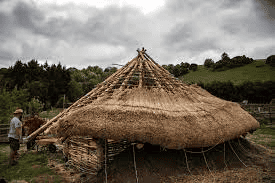You’ve probably never given much thought to the history of roofs. Roofs were not always as efficient or insulated as today’s. The history of roofing is fascinating and has helped us get to where we are today, with a wide range of styles and materials to choose from. We’ll explore the human history of roofs.
Early man may have been better at protecting himself against the elements than we think. Archaeologists found evidence that roofs could be made out of anything available locally, such as wood, rocks or clay, and even animal bone. Roofs in hot countries were often made from palm fronds. This method is still used today in tropical areas. Early homes used the wattle-and-daub method, which was a combination of mud and other materials that were woven together. For help from Roofing Companies Bristol, contact www.mogfordprescott.co.uk/roofers-bristol

The roof styles in China are quite different from those in the UK. Clay roof tiles were used as early as 3,000 BC. Clay roof tiles and their application spread throughout Europe through the travels of Ancient Greeks, and later the Roman Empire. Slate tiles and wood were the most popular materials in northern Europe.

In Britain, thatched roofs have been used since the 7th century. This type of roof is still prevalent in the UK. The style was also common in countries with higher temperatures, such as Fiji or Hawaii. In Africa, the same method was used to make the thatch from sugar cane leaves. It is interesting to note that the pioneers of America also used a layer of earth and thatching as insulators for their prairie homes.
In southern Europe, clay tiles were used. The clay was baked to give Mediterranean homes their distinctive terracotta look. Concrete became cheaper at the beginning of the 20th Century, so tiles were painted to match the traditional look.